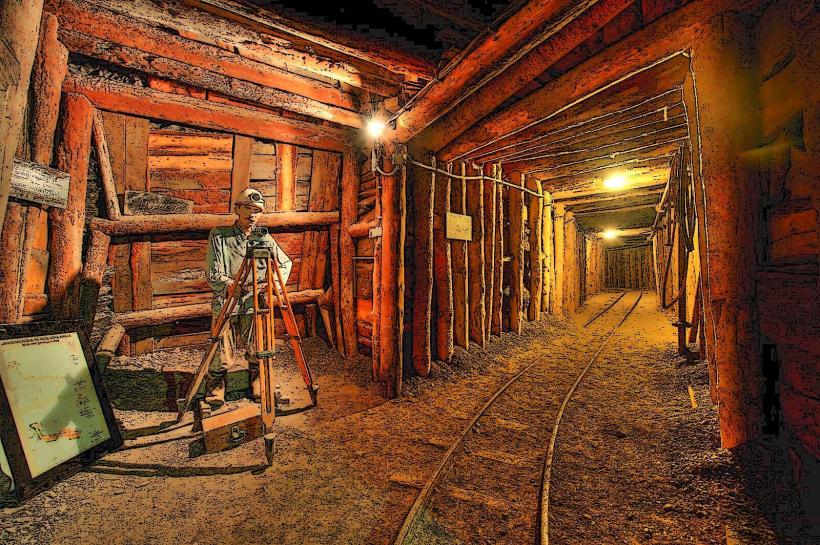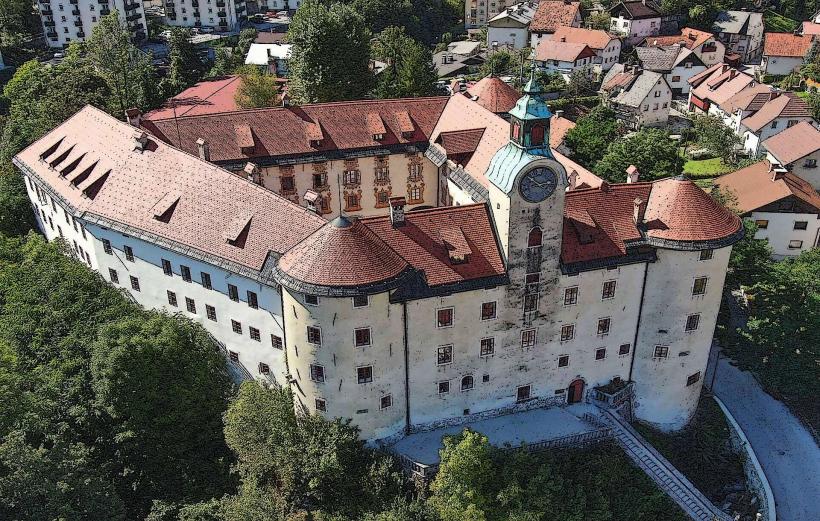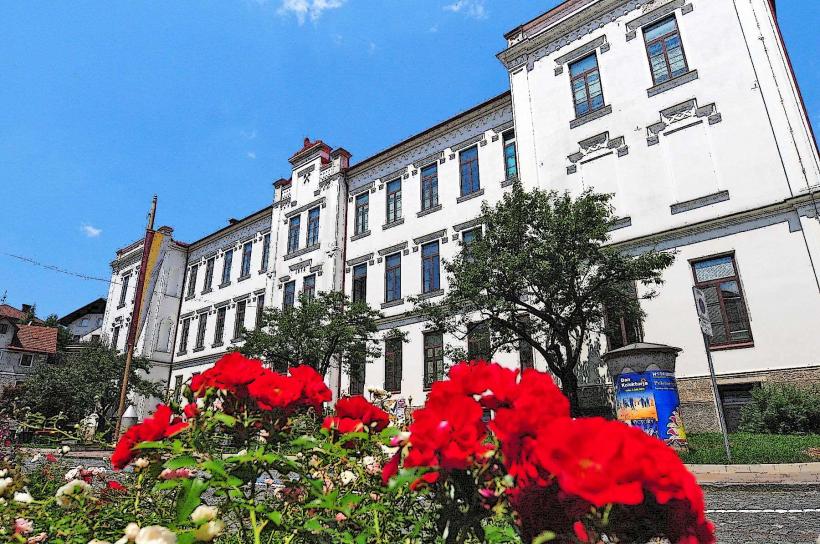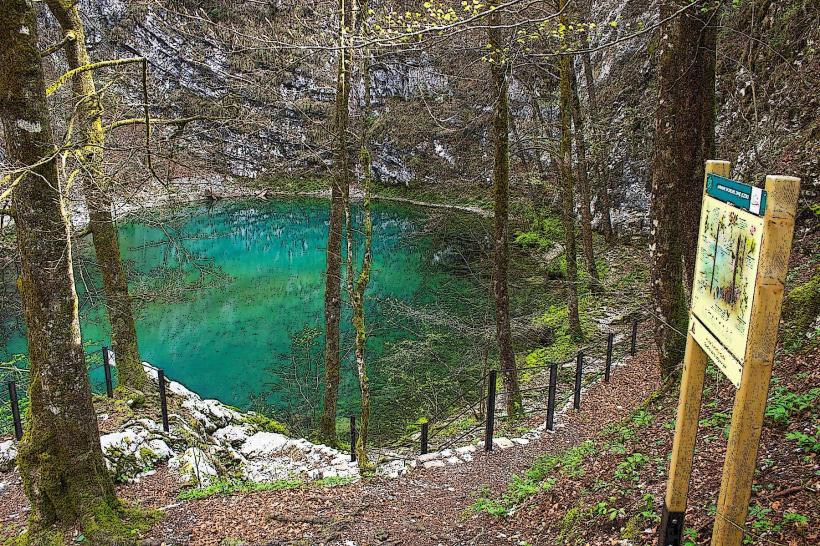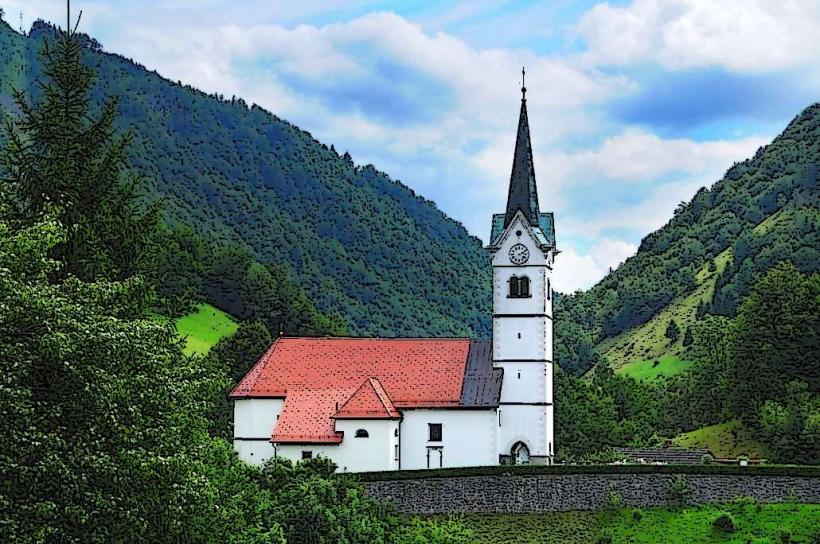Information
City: IdrijaCountry: Slovenia
Continent: Europe
Idrija, a town in Slovenia renowned for its rich mining history, natural beauty, and cultural heritage.
General Overview
- Status: Idrija is a town and the administrative center of the Municipality of Idrija. It is one of the smaller towns in Slovenia but has significant historical and cultural importance.
- Location: Idrija is located in western Slovenia, in the Idrija Valley, about 50 kilometers (31 miles) northwest of Ljubljana and around 30 kilometers (19 miles) southeast of Gorizia, Italy.
- Population: Approximately 12,000 residents.
- Area: The municipality covers an area of about 300 square kilometers (116 square miles).
- Altitude: Idrija is situated at an altitude of around 300 meters (984 feet) above sea level.
Geography
- Position: Idrija lies in a valley surrounded by hills and forests, part of the Alpine foothills. It is located along the Idrija River, a tributary of the Soča River.
- Climate:
- The region has a subcontinental climate, with cold winters and mild, humid summers.
- Average summer temperatures range from 20-25°C (68-77°F), while winter temperatures often drop below 0°C (32°F), with snowfalls common in the mountains surrounding the town.
History
Ancient and Medieval Times
- The Idrija Valley has been inhabited since ancient times, and the area was known for its natural resources, especially mercury. The Celts and later the Romans used the region for mining, particularly for mercury ore.
- Mercury Mining: Idrija's mercury mine is one of the oldest and largest in the world. The mining of mercury began in the 15th century and continued until the late 20th century. Idrija became an important center for mercury extraction, with the mine playing a key role in the town's development.
Industrialization
- During the 16th century, Idrija's mercury mine expanded, and by the 17th century, it became one of the largest mercury mines in the world. The Habsburg Empire operated the mine for several centuries, and its wealth from mercury production helped shape the region's economy.
- The development of mining techniques and the use of mercury in industry and medicine helped Idrija thrive as an industrial center in the region.
- In the 19th century, Idrija was a hub for the production of mercury-based products, and its mine became famous for employing advanced mining techniques and technologies.
Post-World War II Era
- After World War II, the mine continued to operate under the Socialist regime of Yugoslavia, though it began to decline in the late 20th century as mercury became less widely used. The mine was finally closed in 1994 after almost 500 years of operation.
- Since the closure of the mine, Idrija has focused on preserving its historical and industrial heritage while developing tourism and other industries.
Economy
- Mercury Mining: Although the mine closed in the 1990s, the legacy of mercury mining still influences the town's economy and identity. The Idrija Mercury Mine is now a UNESCO World Heritage Site, attracting visitors interested in industrial history.
- Tourism: Idrija has become a destination for cultural tourism, with visitors coming to explore its historical sites, museums, and natural surroundings. The town is also popular with those interested in eco-tourism and hiking.
- Craftsmanship: Idrija is known for its lace-making tradition, which is recognized as part of Slovenia’s cultural heritage. Idrija lace is a delicate, handcrafted lace made from fine thread, and it is still produced by local artisans.
- Local Industry: In recent years, the town has shifted towards light industry, including the production of textiles, electronics, and engineering products.
Culture and Lifestyle
Local Culture
- Idrija has a rich cultural heritage, deeply rooted in its mining history and lace-making tradition. The town celebrates its heritage with various festivals, exhibitions, and cultural events throughout the year.
- The town’s architecture reflects its industrial past, with mining structures, workers' housing, and baroque-style churches.
Cuisine
- Idrija Cuisine: The local cuisine includes traditional Slovenian dishes, often featuring potatoes, meat, and sauerkraut. A specialty of the region is Idrija žlikrofi, a type of dumpling filled with potatoes and herbs, often served with lamb or beef.
- The cuisine also includes roast meats, soups, and stews, as well as local wines and cheeses.
Festivals and Events
- Idrija Lace Festival: Held annually, this festival celebrates the town’s lace-making heritage. It features exhibitions, workshops, and performances of lace-making by local artisans.
- Idrija Miner’s Day: A celebration of the town’s mining heritage, including processions, historical reenactments, and exhibitions about the history of the mercury mine.
- Cultural Events: Idrija hosts a variety of cultural performances, including theater, music, and dance. The town has a strong folk music tradition, and local festivals often feature performances of traditional songs and dances.
Natural Attractions
- Idrija Valley: The valley surrounding the town is a beautiful natural area with hills, forests, and rivers. It offers opportunities for hiking, cycling, and outdoor recreation.
- Idrija Gorge: A natural gorge formed by the Idrija River, offering scenic views and hiking paths.
- Wildlife: The area around Idrija is home to a variety of wildlife, including deer, wild boar, and various bird species, making it a popular destination for nature enthusiasts and wildlife photographers.
Urban Design and Architecture
- Idrija Mercury Mine: The Idrija Mercury Mine is a central part of the town’s industrial heritage. The site has been preserved as a museum and UNESCO World Heritage Site, showcasing the history of mercury mining and its impact on the region.
- Idrija Lace Museum: The Idrija Lace Museum is dedicated to preserving the town’s lace-making tradition and showcases intricate lacework, tools, and historical exhibits.
- Idrija Castle: The Idrija Castle, built in the 16th century, is an important historical landmark. The castle now houses the Idrija Municipal Museum, with exhibits related to the town’s history, including mining and lace-making.
Transportation
- Roads: Idrija is well-connected by road to major Slovenian cities, including Ljubljana (approximately 50 km away), Kranj, and Postojna. The town is accessible via the A1 motorway.
- Public Transport: The town has a bus station with connections to neighboring towns and cities, but public transportation options within the town are limited.
- Airports: The nearest international airport is Ljubljana Jože Pučnik Airport, about 60 km (37 miles) away. Trieste Airport in Italy is also within reach (around 100 km).
Recreational Activities
- Hiking and Cycling: The area around Idrija offers numerous hiking and cycling trails, with routes through forests, hills, and valleys, ideal for nature lovers.
- Cultural Exploration: Visitors can explore the town’s historic sites, museums, and traditional craftsmanship. The Idrija Lace Museum and the Mercury Mine are key attractions for those interested in the town’s history.
Sustainability Efforts
- Eco-tourism: Idrija promotes eco-friendly tourism, encouraging visitors to explore its natural surroundings and learn about its heritage while minimizing environmental impact.
- Preservation of Heritage: Efforts are made to preserve the town’s industrial history, including the mercury mine and the lace-making tradition, ensuring that future generations can experience these cultural treasures.
Key Features
- Mercury Mining Heritage: Idrija’s long history of mercury mining and its legacy as a UNESCO World Heritage Site is a defining feature of the town.
- Lace-making Tradition: The town is famous for its intricate Idrija lace, a significant part of Slovenia’s cultural heritage.
- Natural Beauty: Idrija is surrounded by forests and hills, offering opportunities for outdoor activities like hiking, cycling, and wildlife watching.
- Cultural and Industrial Tourism: Idrija combines its industrial past with a rich cultural scene, making it an attractive destination for history and art enthusiasts.

